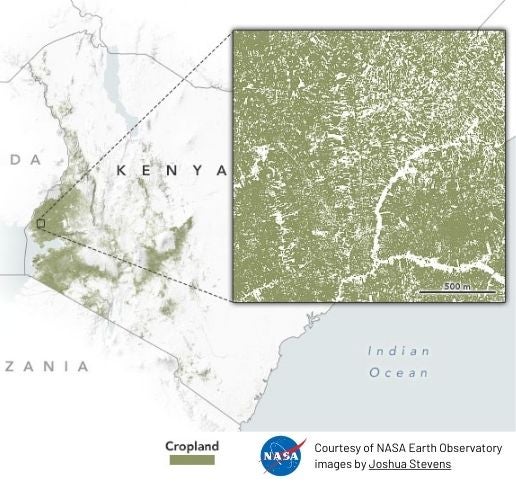
a new RESEARCH REPORT BY MERCY CORPS explores the specific conditions and trends that shape the application of data for climate resilience in emerging markets. The main insights reveal that data, new technologies, and advanced analytics are essential for achieving climate goals, while also highlighting the real-world challenges we will need to overcome. The report focuses on four defining questions presented here.
by Mercy Corps
We are experiencing a monumental convergence of the acceleration in innovation for climate resilience solutions in emerging markets and the increasing importance, availability and quality of data, advanced analytics and AI. We set out to understand the trends, challenges and opportunities at this intersection to inform our own investment thesis, and push the entire ecosystem toward smarter, more impactful innovations.
Through a series of over 30 interviews with leading innovators in this space, including many of our own portfolio companies, we discussed the unique conditions and trends setting the stage for how data can be applied to climate resilience in emerging markets. In particular, we reviewed major trends in connectivity and mobile phone penetration; satellite technology and remote sensing data; artificial intelligence and advanced analytics; funding, regulation, and partnerships for climate data; and more.
We sought to answer some four defining questions for how the convergence and increasing flywheel of these trends will lead to tangible climate adaptation and resilience solutions:
- How are innovators making use of these trends to accelerate the use of data and analytics for climate applications?
- How are advances in data and analytics being used to design better, more affordable climate resilience products for underserved communities?
- What are some of the real-world barriers to the use and application of data for climate resilience?
- What is the role of public goods, data unions and other alliances to catalyze new and improved climate innovation?

The key insights from our research lead us to a cautiously optimistic view of the future. They point to the pivotal role data, new technologies and advanced analytics will play in reaching climate goals, and also serve as a humble reminder of the real-world barriers we will face along the way. Key findings:
- We are increasingly bullish on the importance of data, connectivity and analytics to build innovative and inclusive climate resilience products. We uncovered an overwhelming number of new use cases for data in climate resilience, including some unlocking previously near-impossible or extremely costly challenges.
- Climate data solutions are becoming more modular and specialized, across a wide range of applications. Innovators of the next decade will be able to leverage this suite of products — building, bundling and creating new solutions at dizzying speeds, and for cheaper than ever. We believe this unbundling and modularization will spur exponential growth in climate innovation.
- Despite the range of reactions, from hype to dismay, we believe that emerging technologies such as artificial intelligence and web3 will play an outsized role in our ability to utilize data to adapt to climate change. We are seeing particularly exciting applications of AI’s increasing sophistication in filling data gaps, cleaning datasets, and correlating extremely large amounts of data. We believe web3 technologies will become increasingly important to providing efficient and safe data sharing, and introduce a new paradigm in data governance, ownership and privacy.
- A collaborative ecosystem of players — from partners to funders — will be essential to achieving our goals, in a way that is unique to the context of data, analytics and climate resilience.
- It’s impossible to avoid the central, critical role of the public sector in achieving our climate goals and scaling innovative climate solutions. The public sector plays an important role as a regulator, standard setter, funder and data source. However, we are especially excited about the role the public sector can play as a market maker, and its power to unlock massive growth opportunities and create new niches for innovation.
This is the critical decade in the fight against climate change — in our ability to reduce our emissions and limit further warming, and in our ability to adapt, build resilience, and protect the billions of people vulnerable to its effects. The use of data and analytics will sit at the heart of our ability to make fast, efficient and sustainable progress toward deploying impactful solutions at scale. We’re excited to share our findings and to work with our community of innovators, funders and ecosystem partners to make a climate resilient future, enabled by data, a reality.
